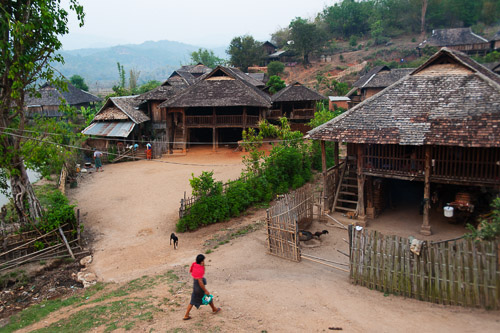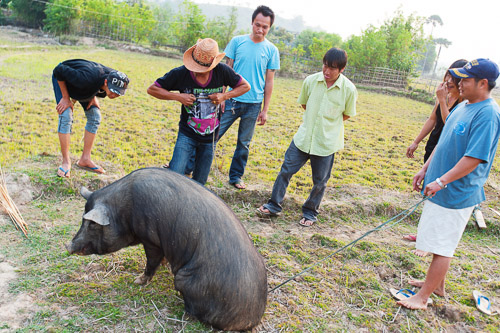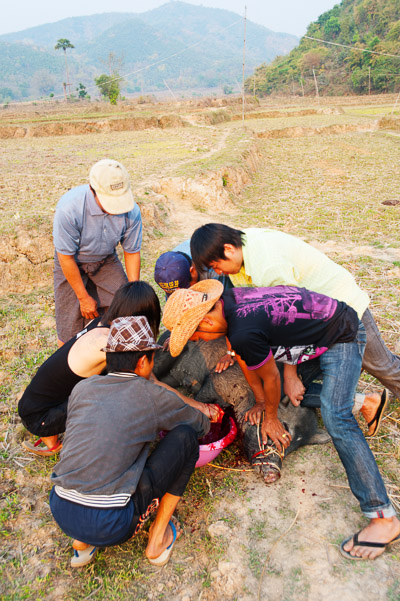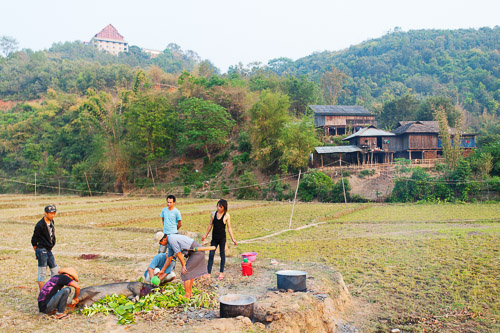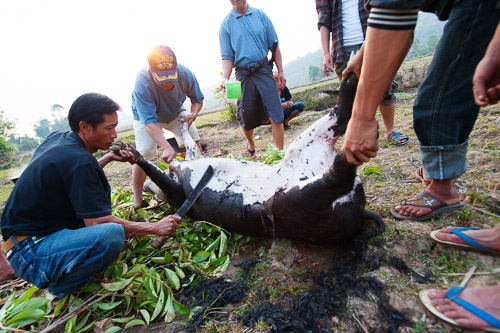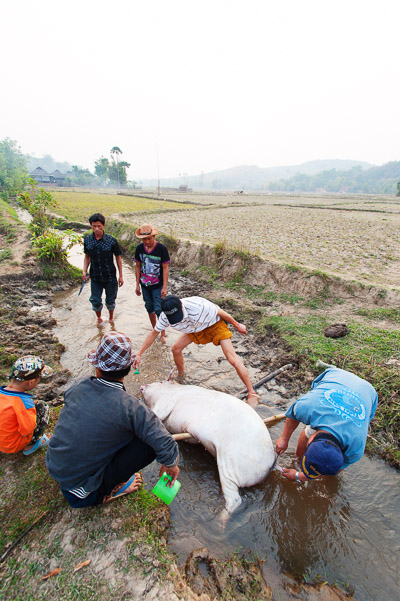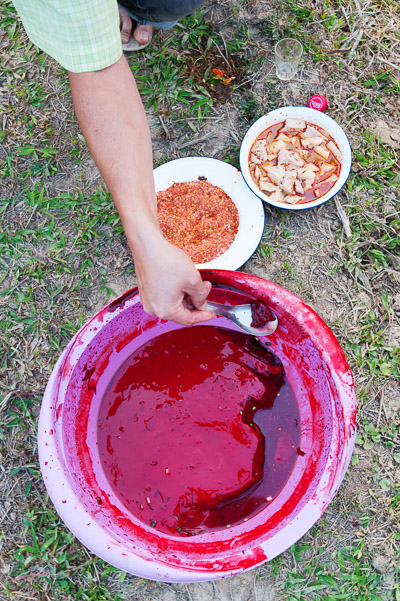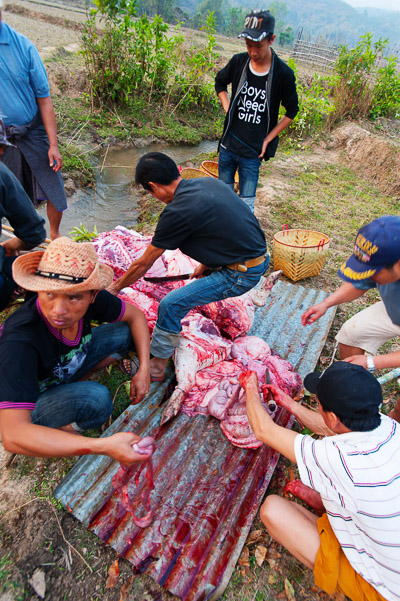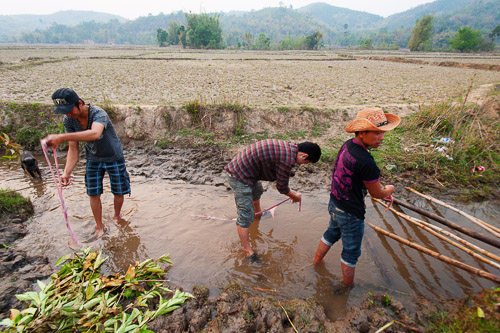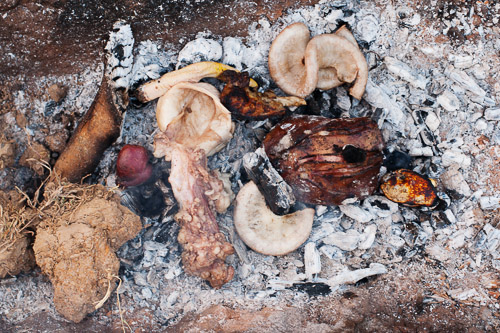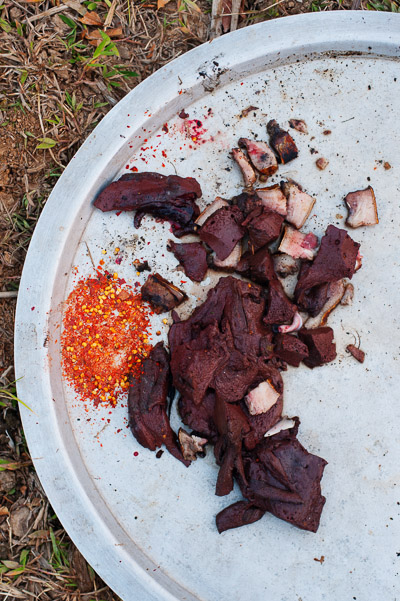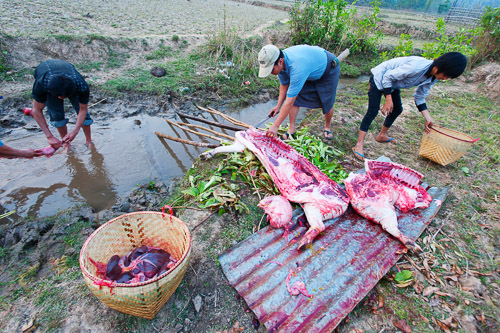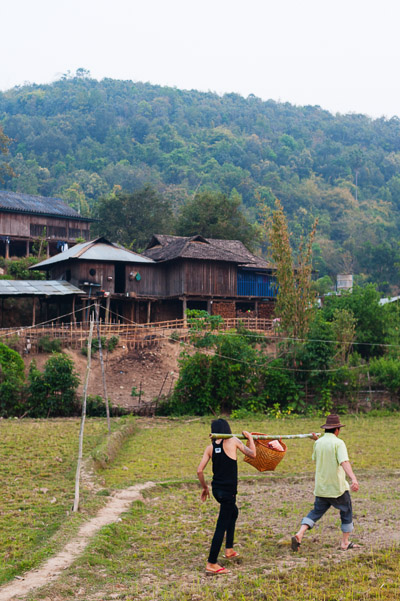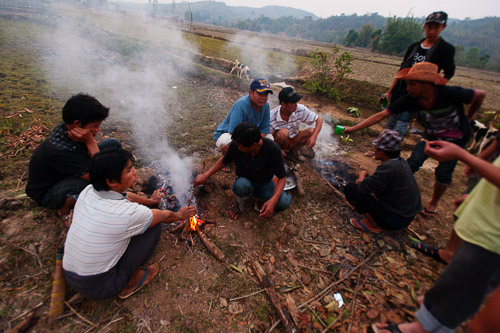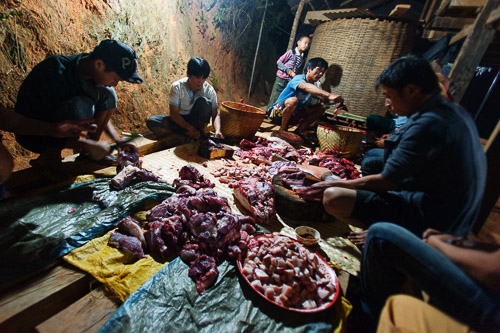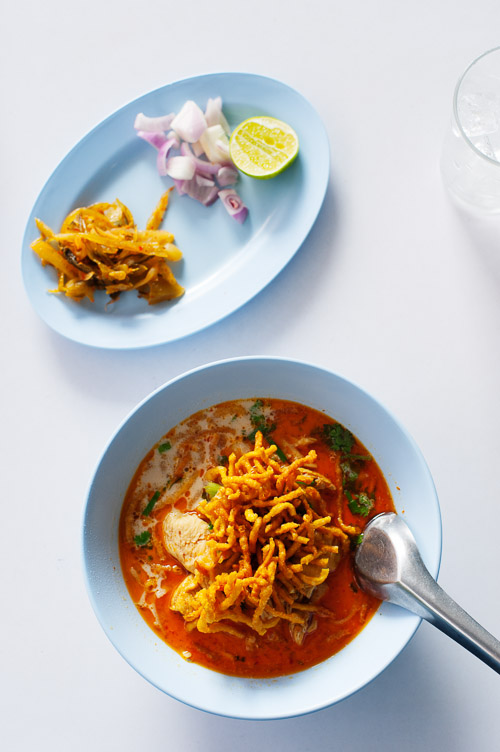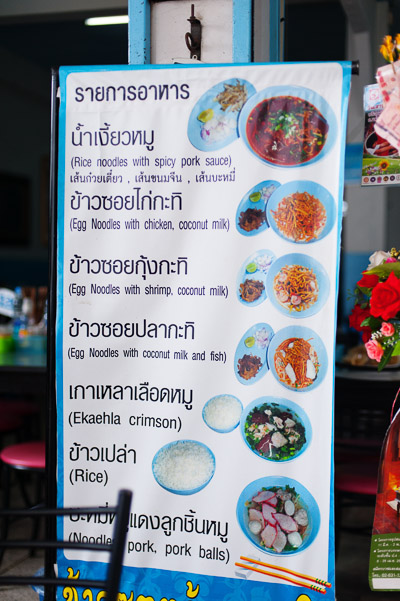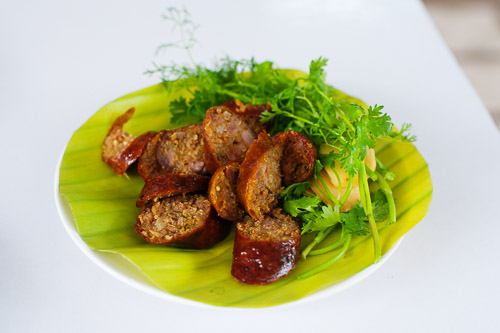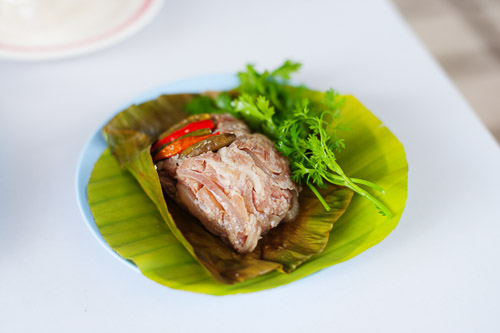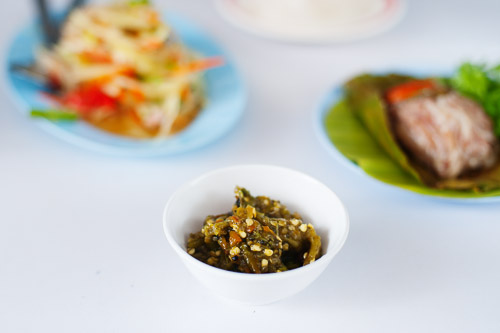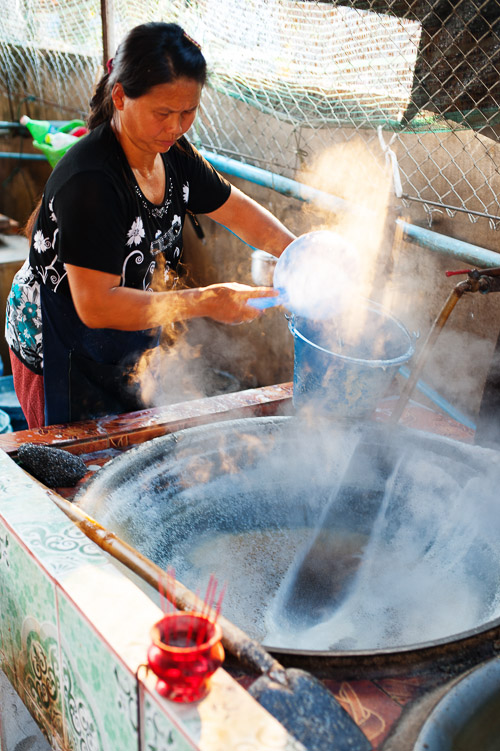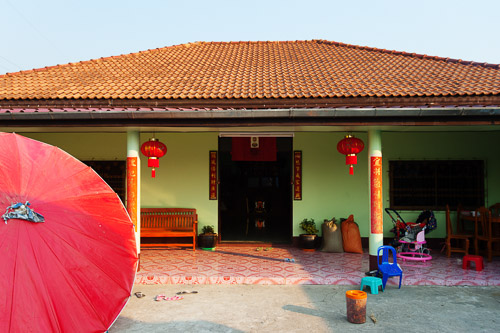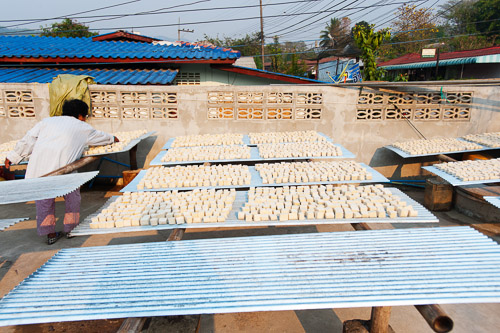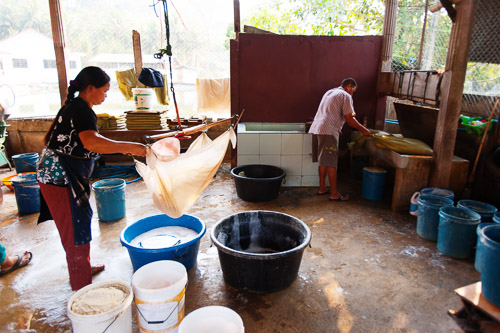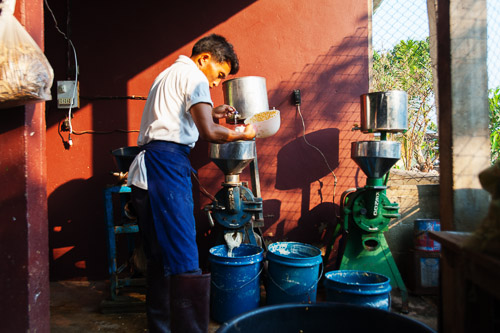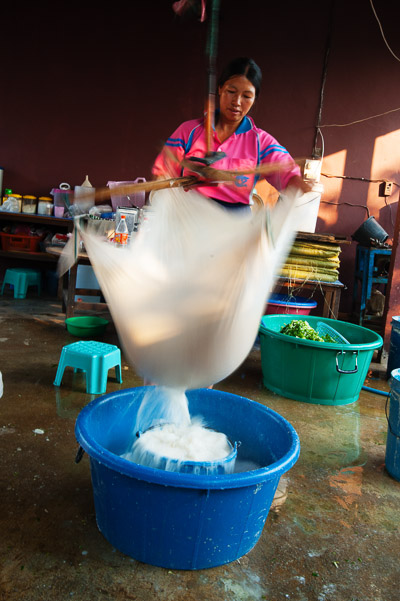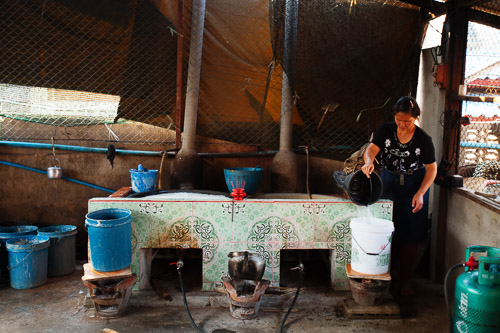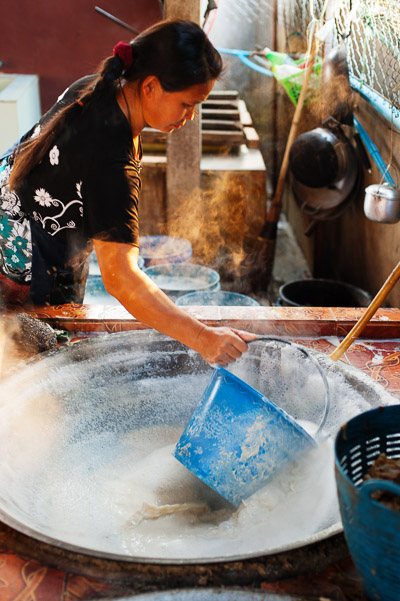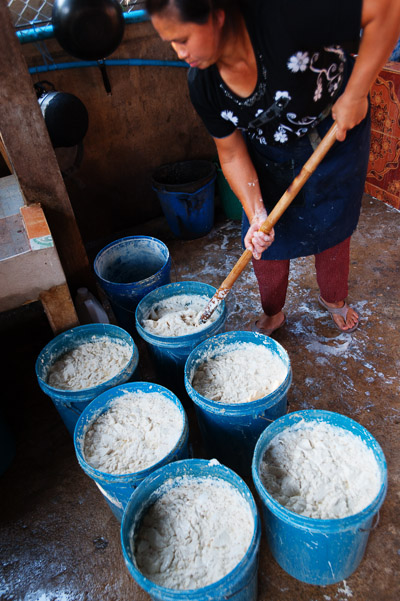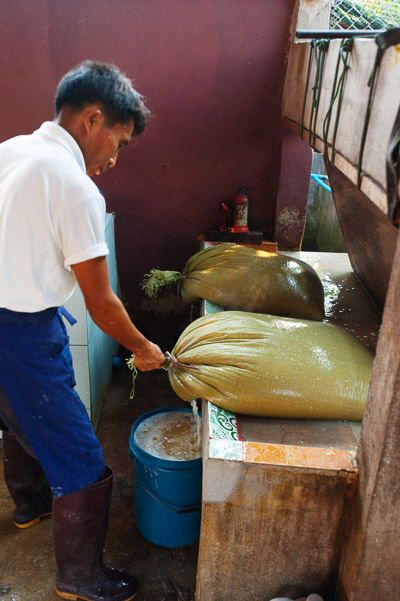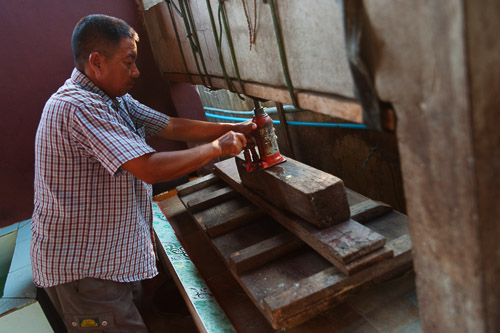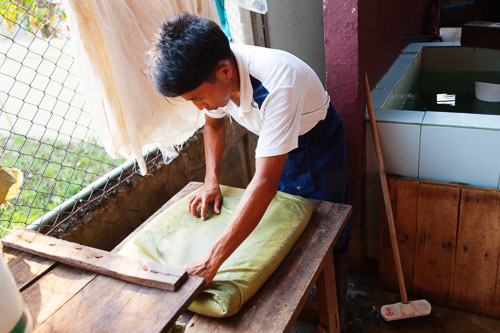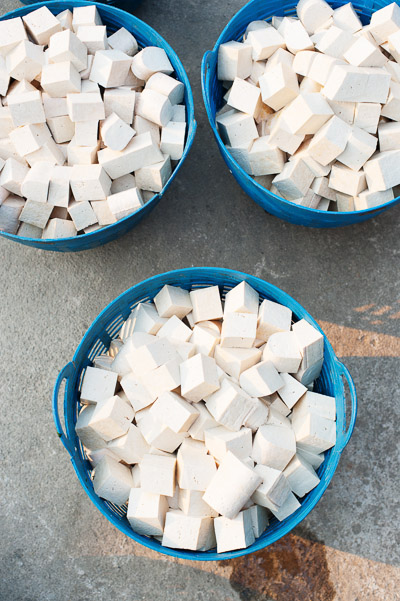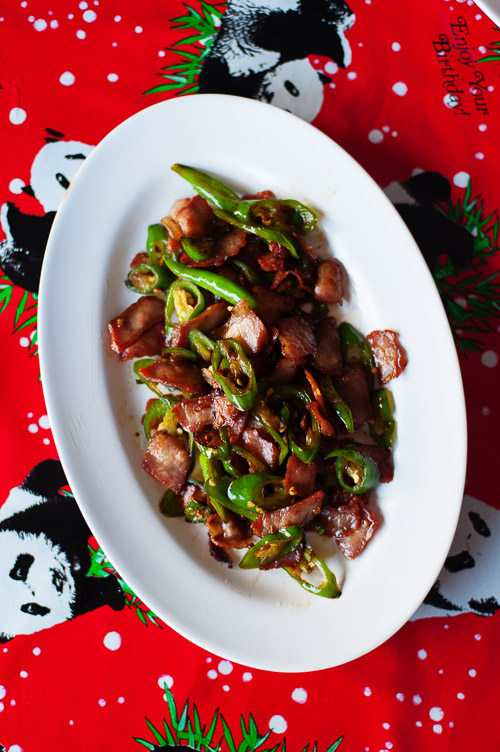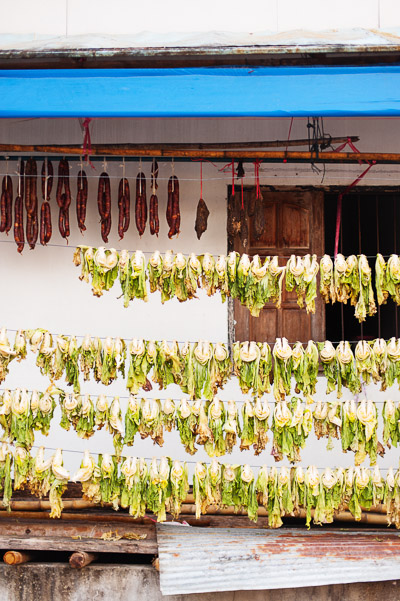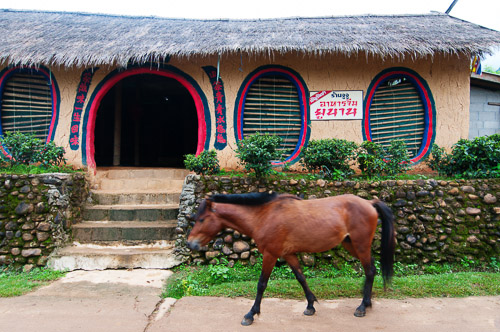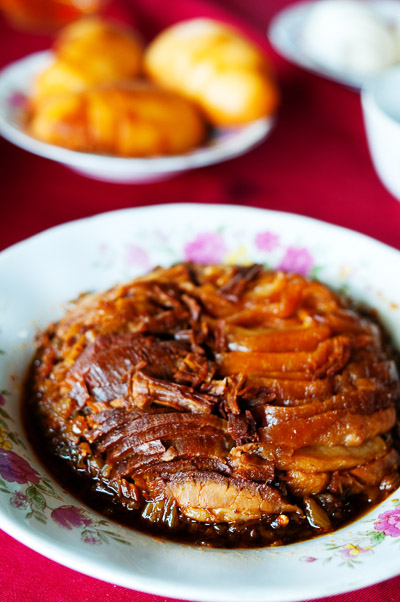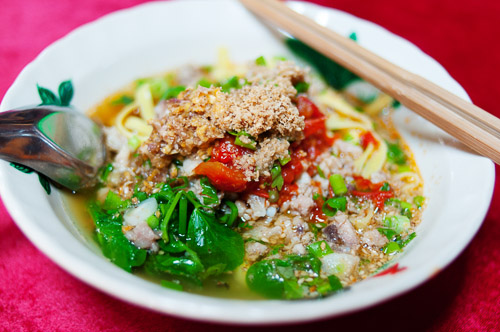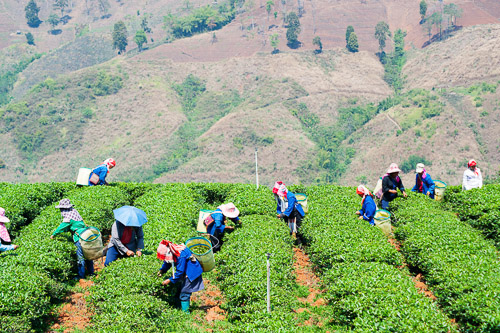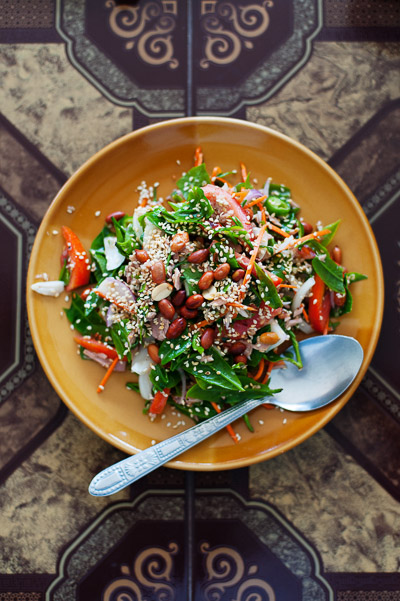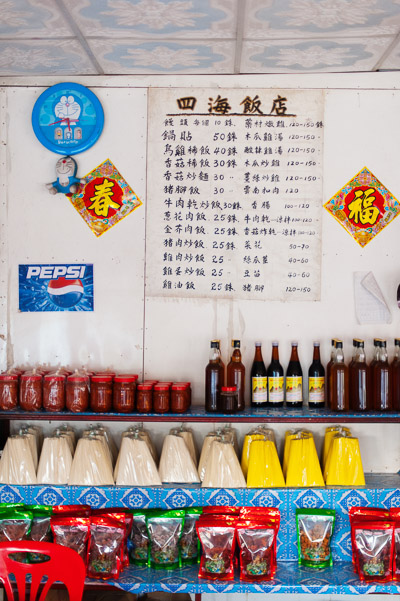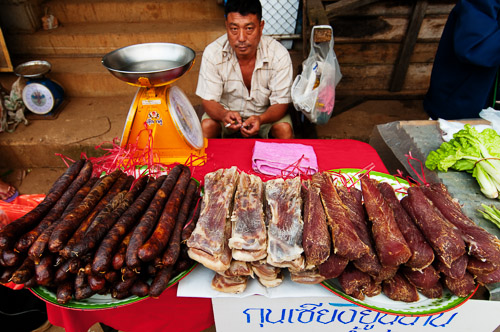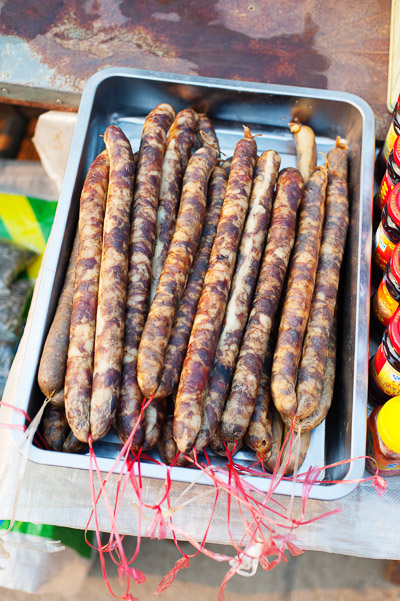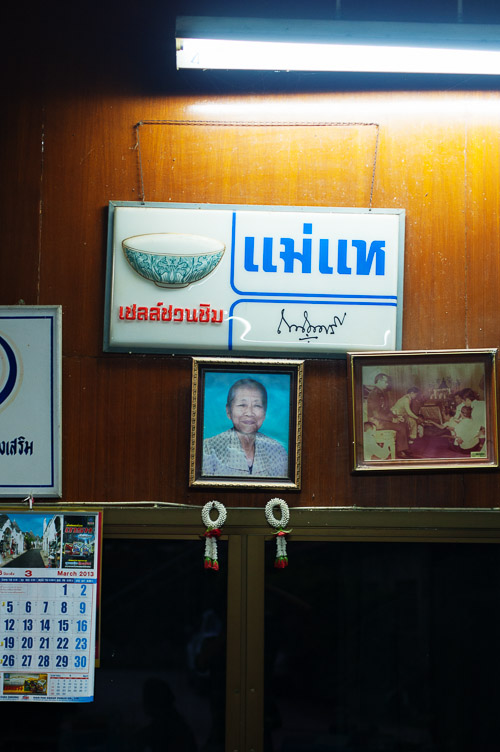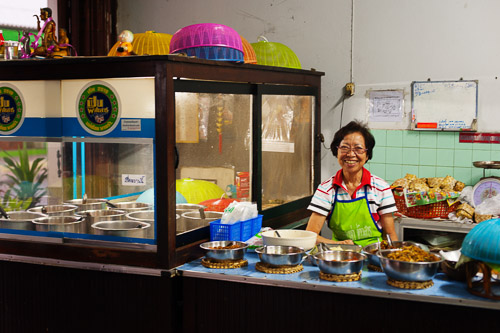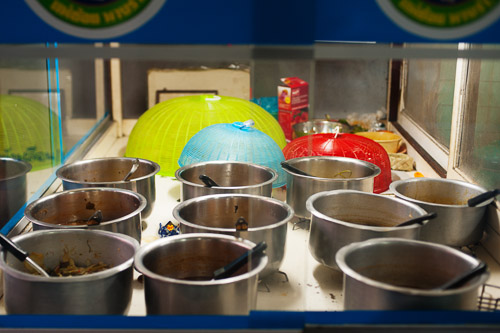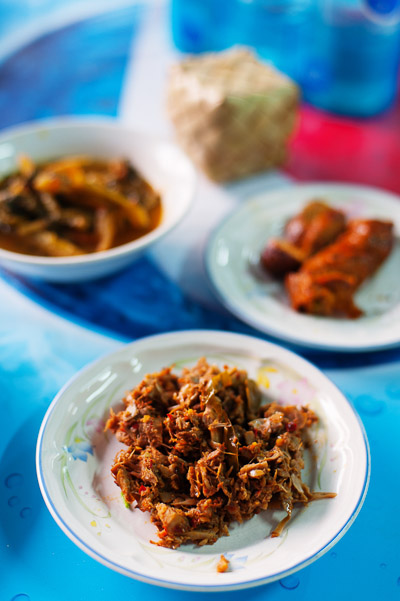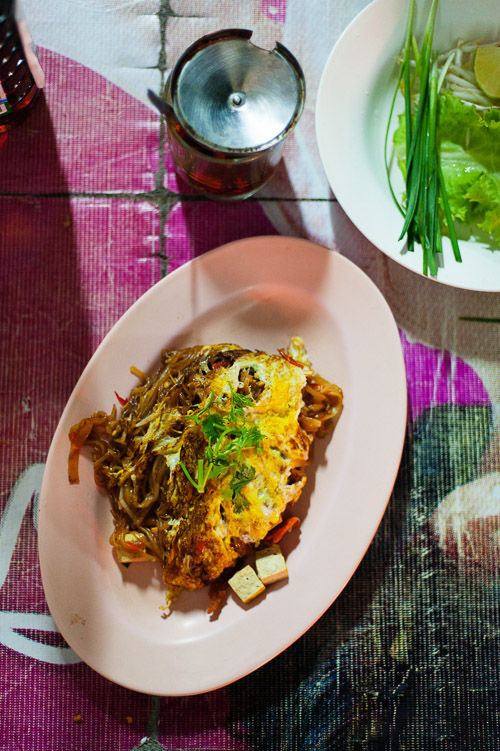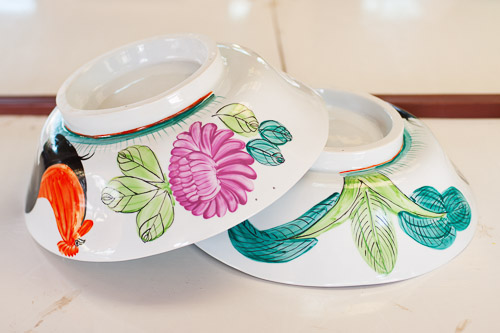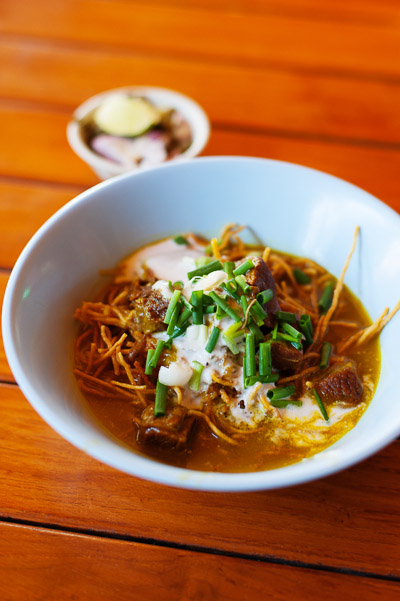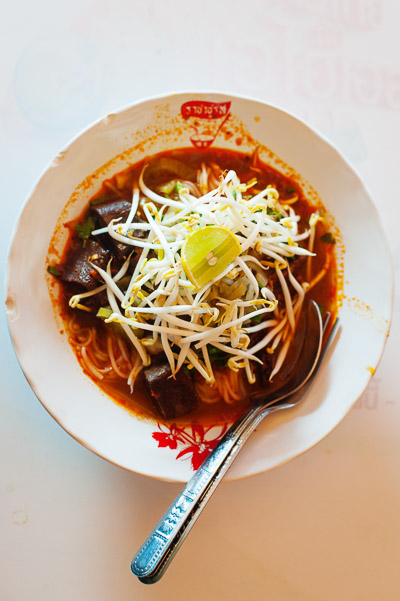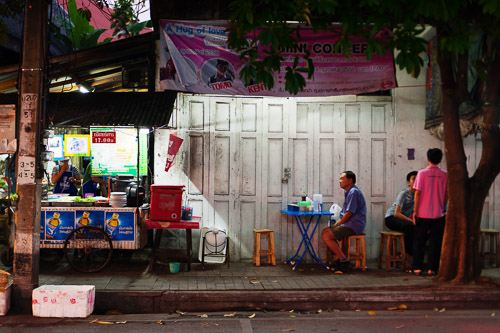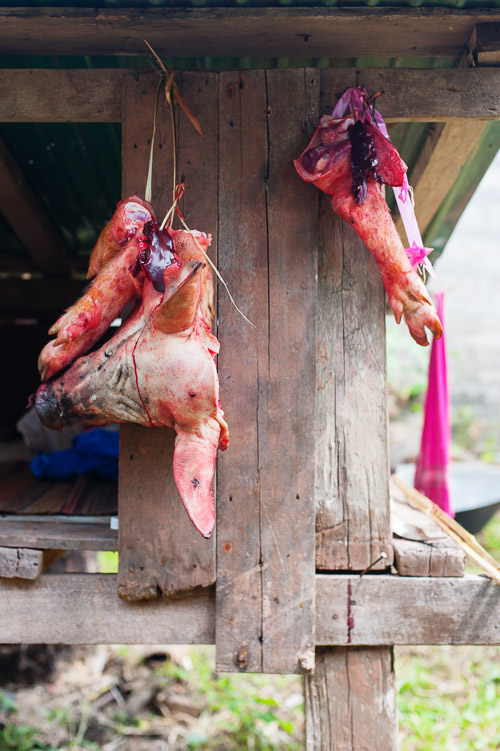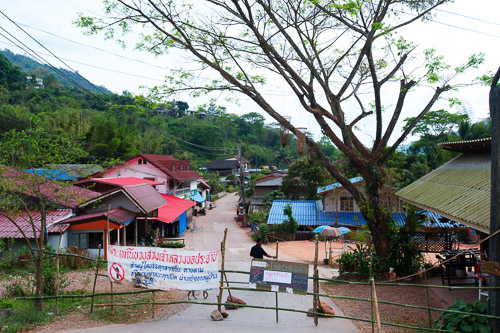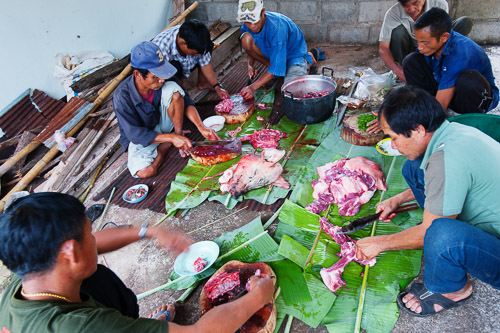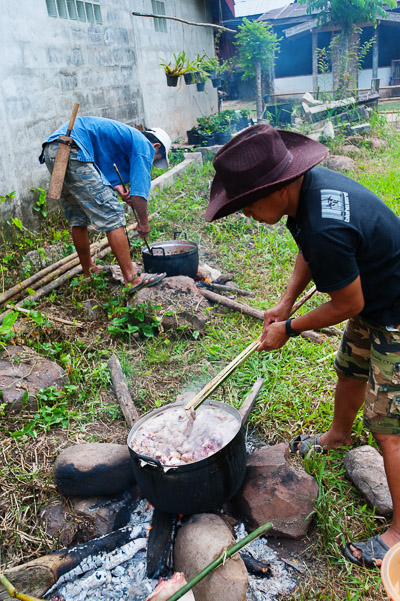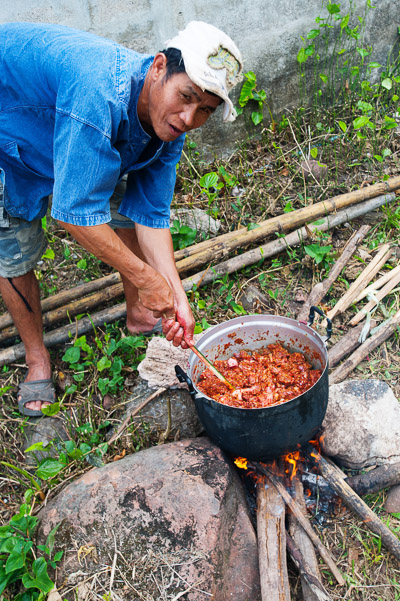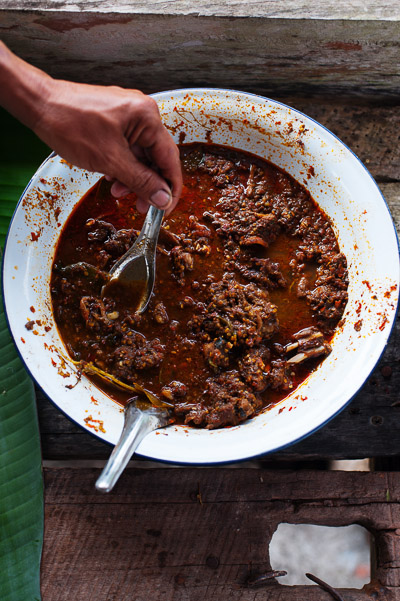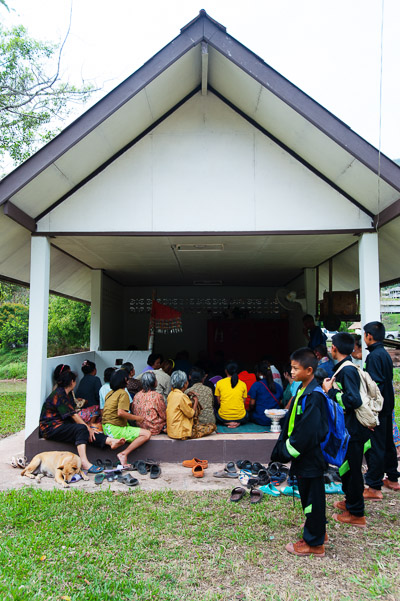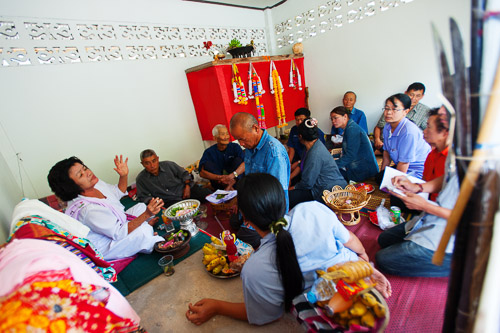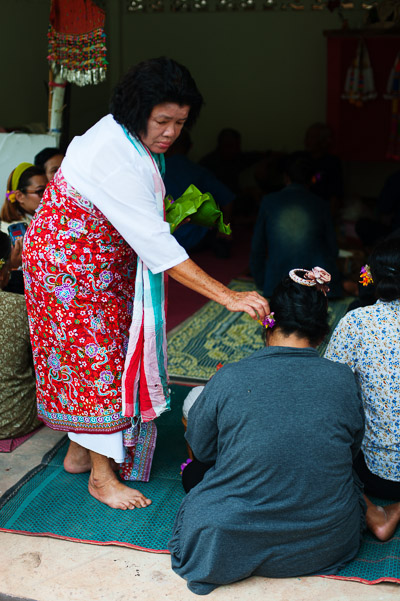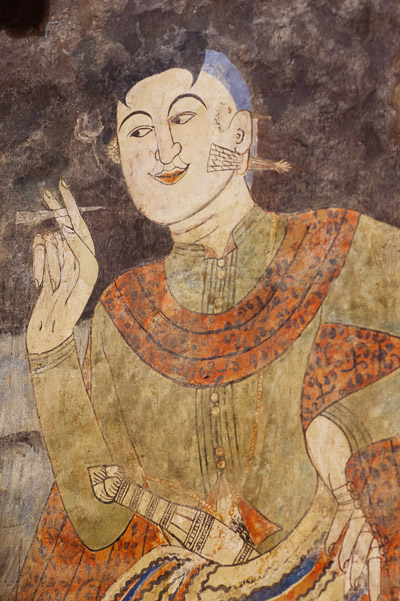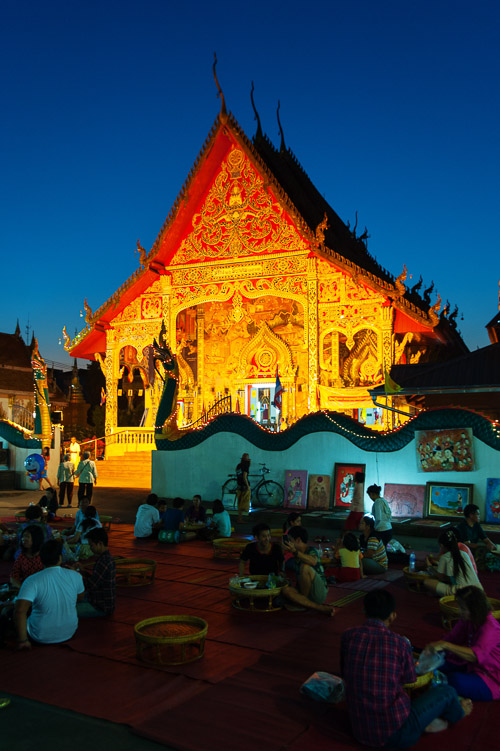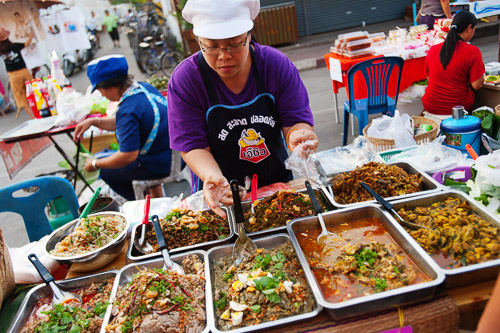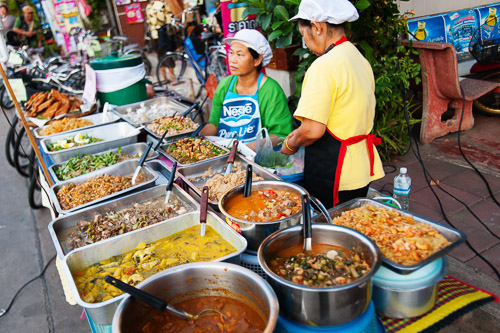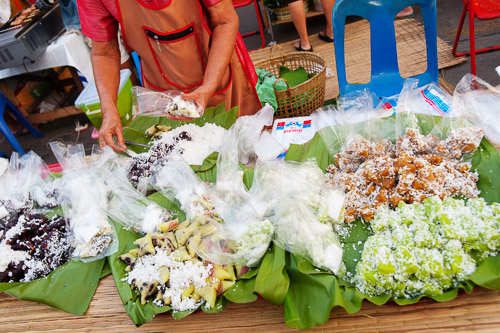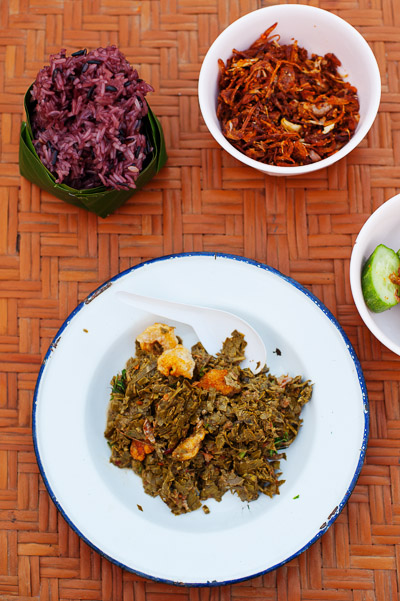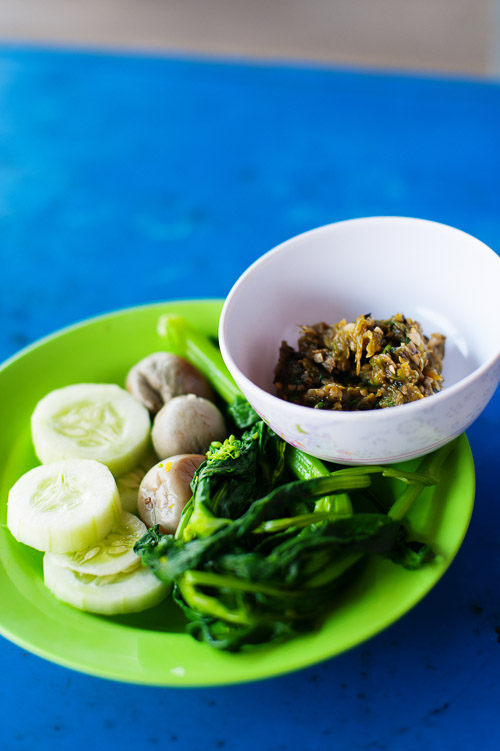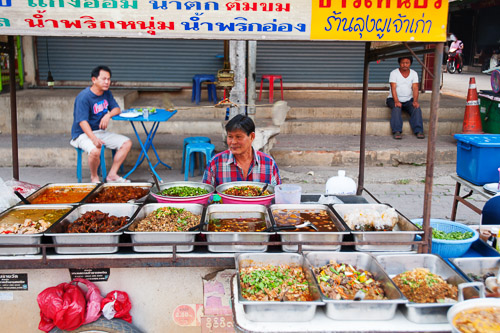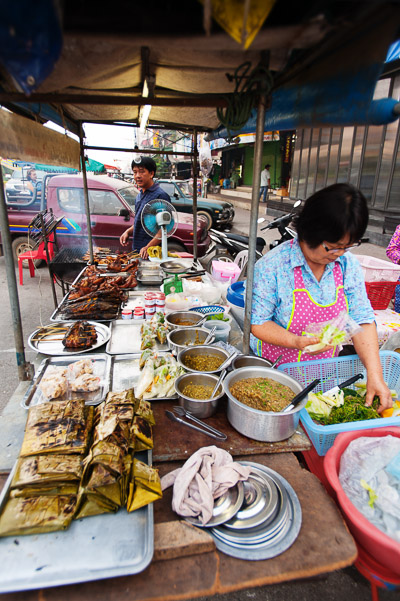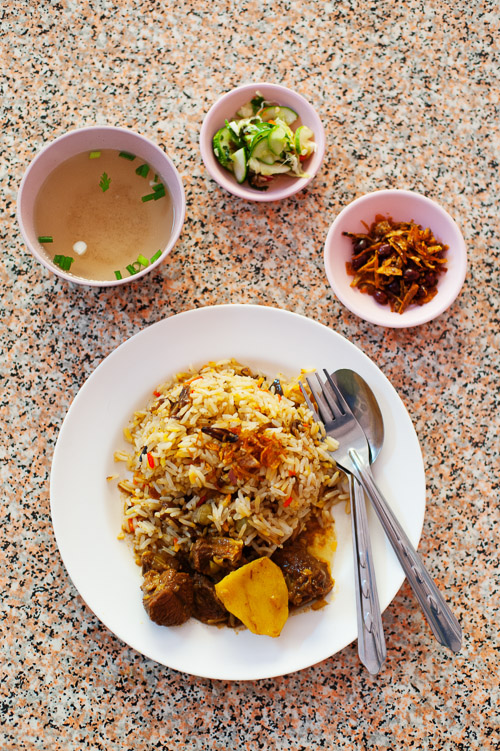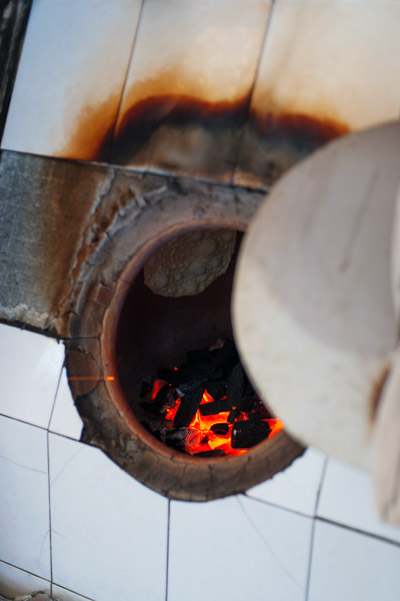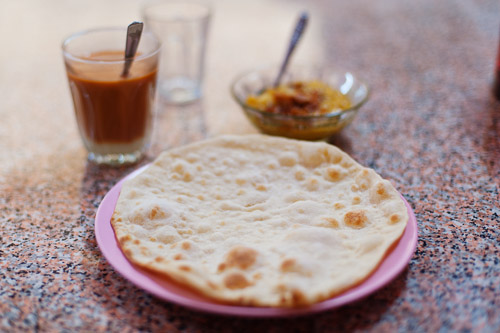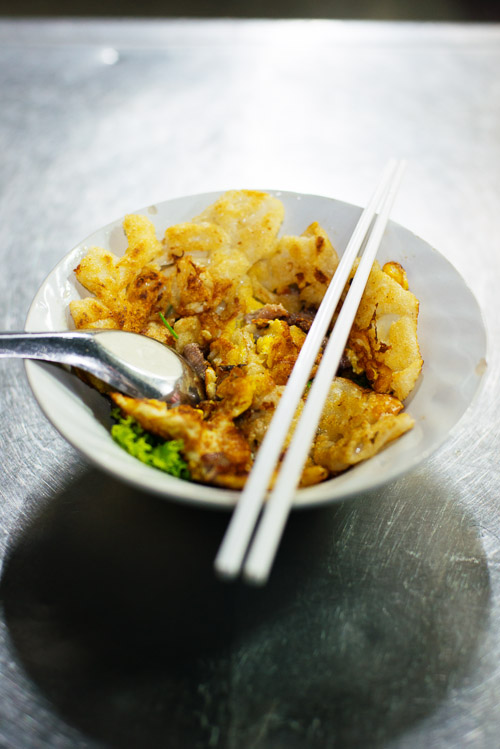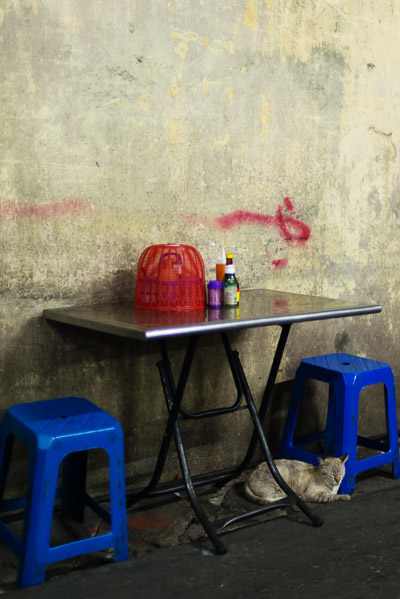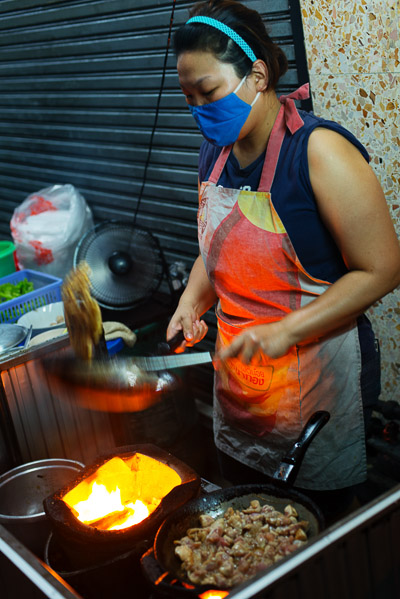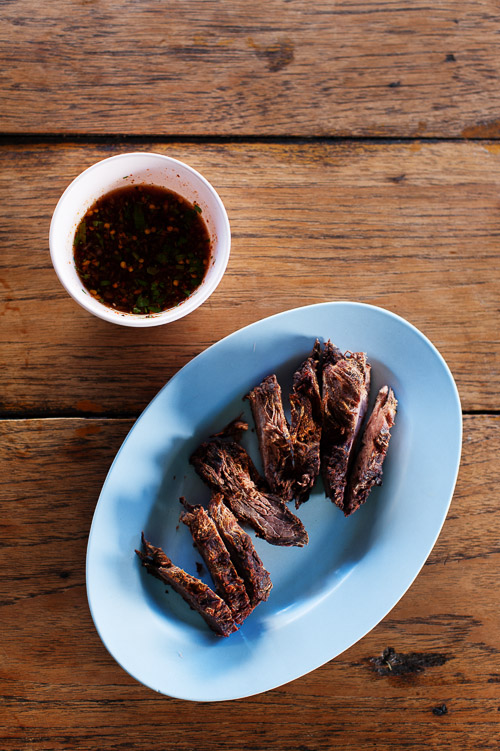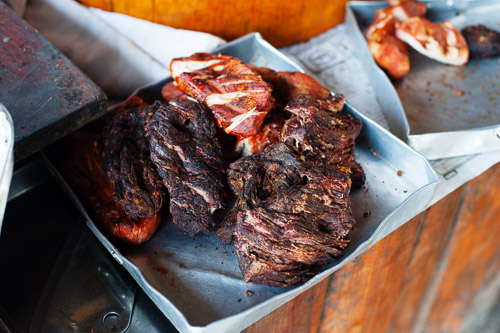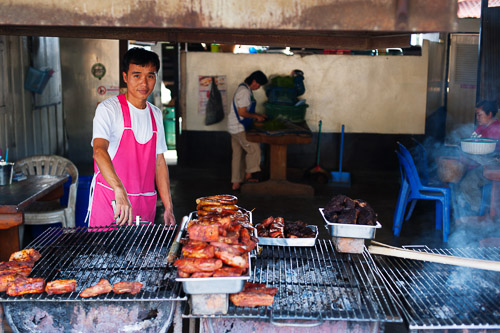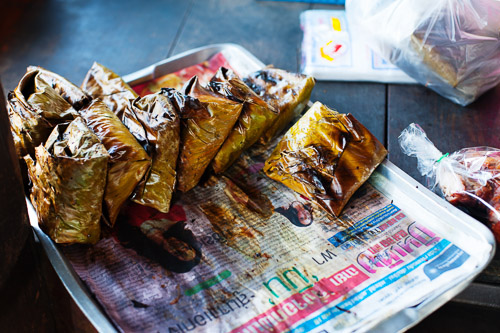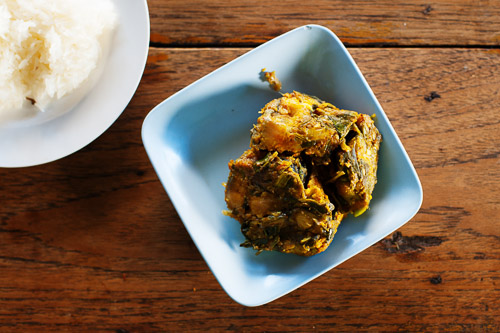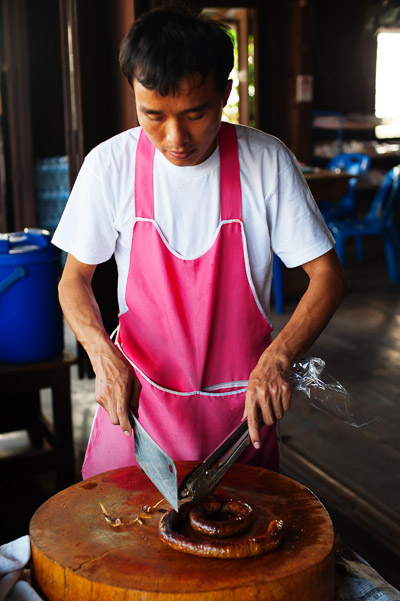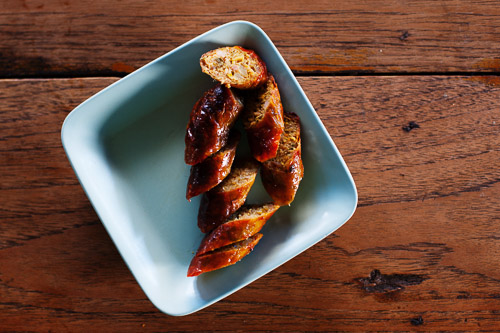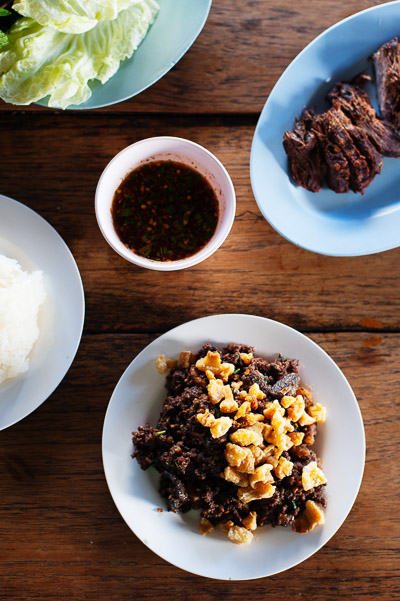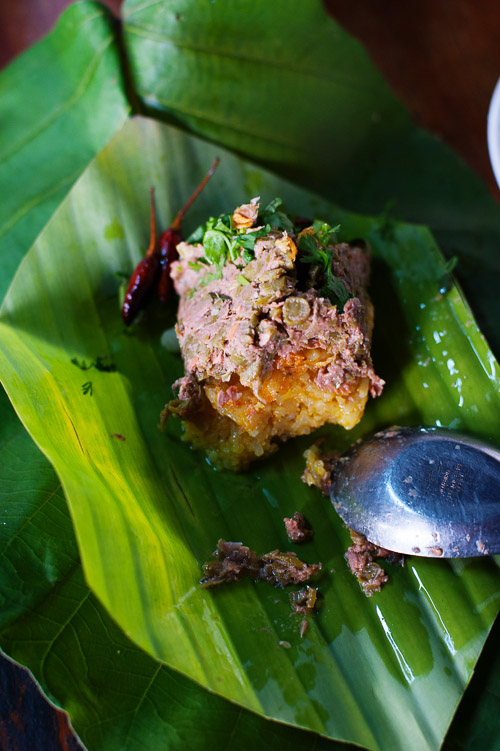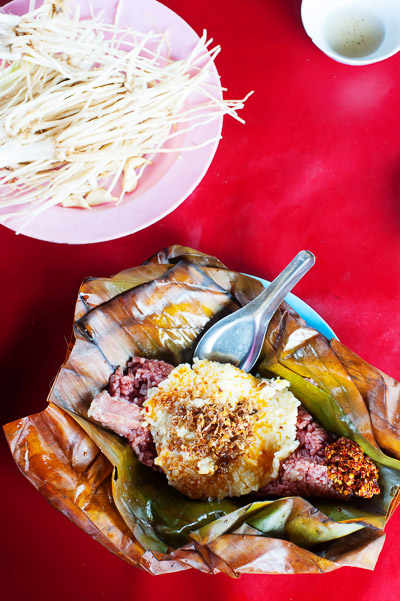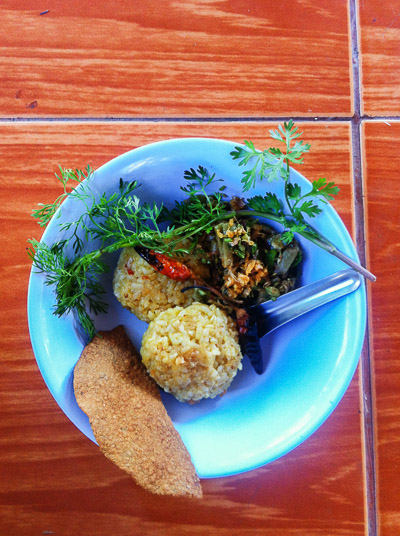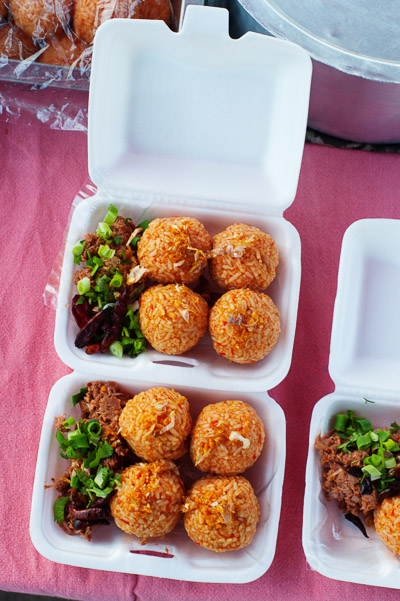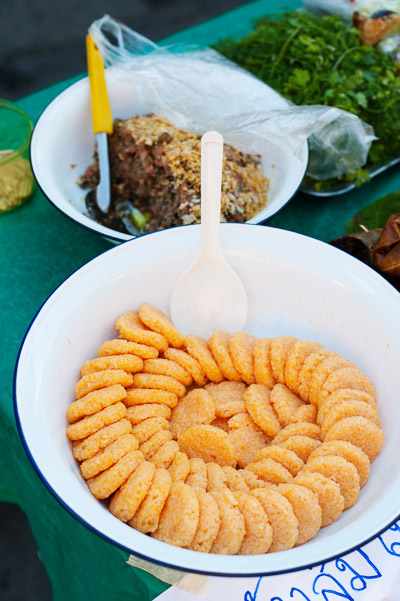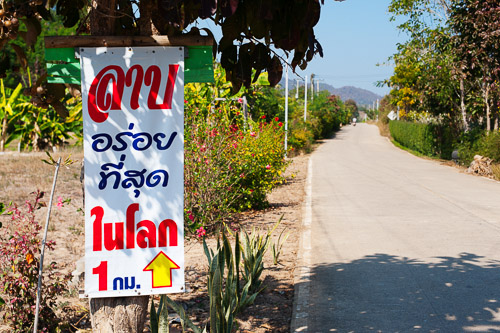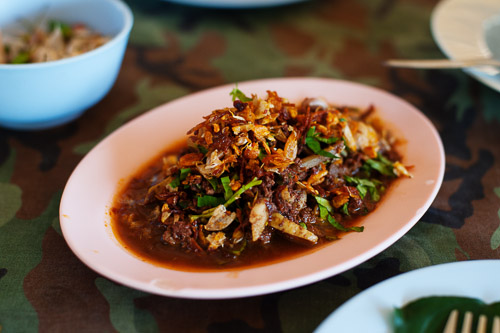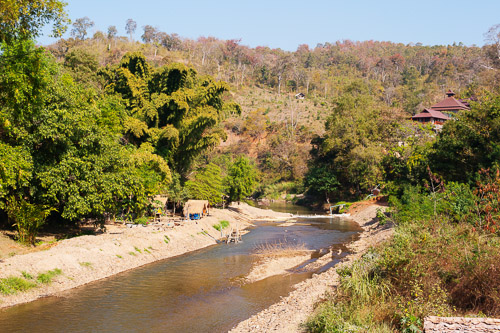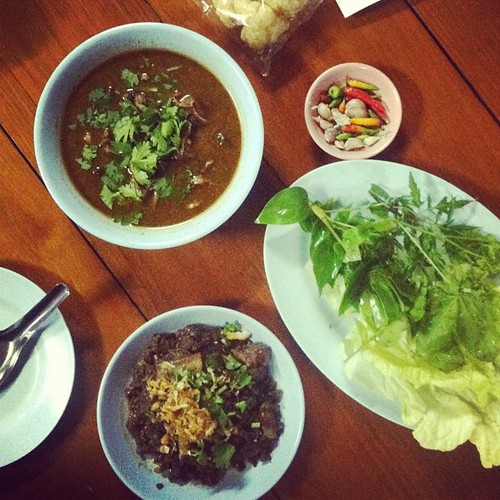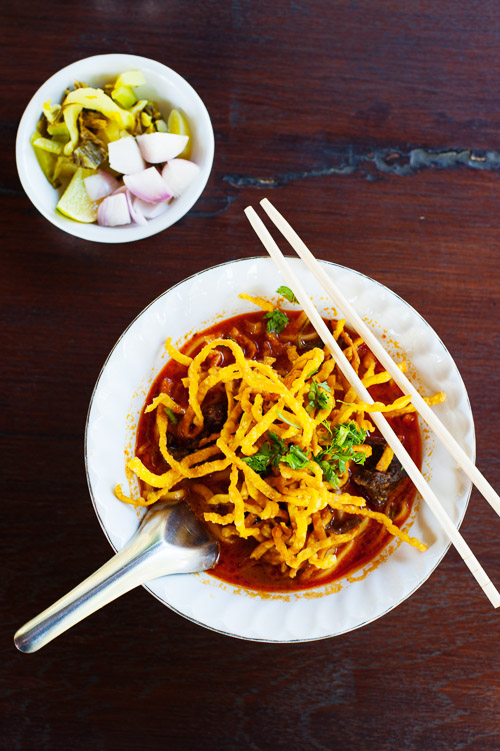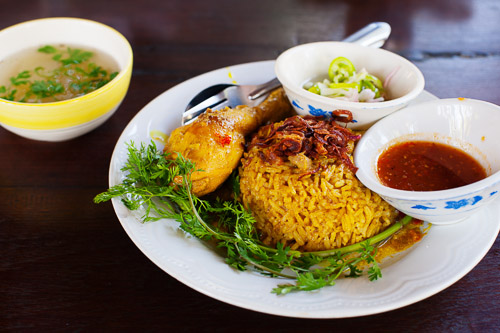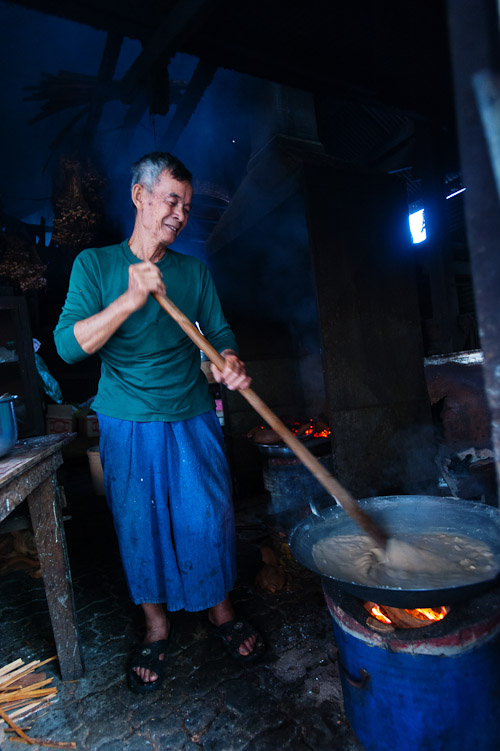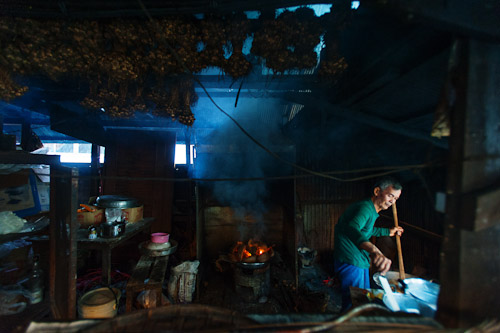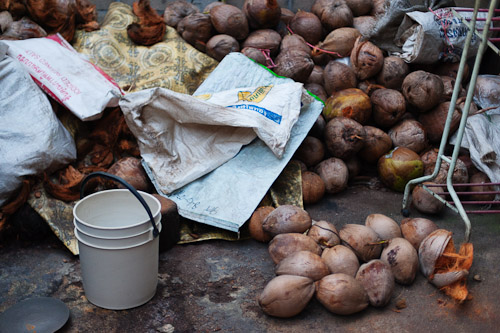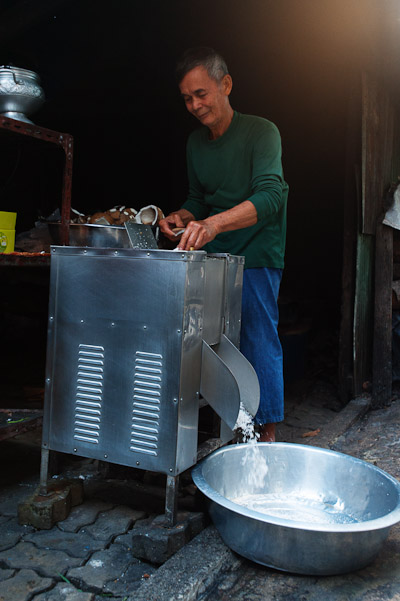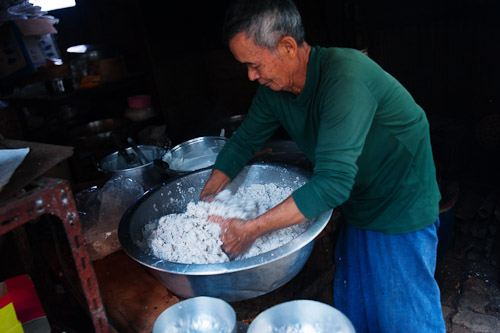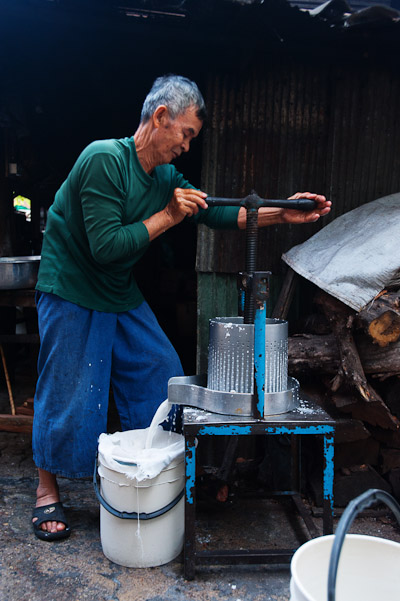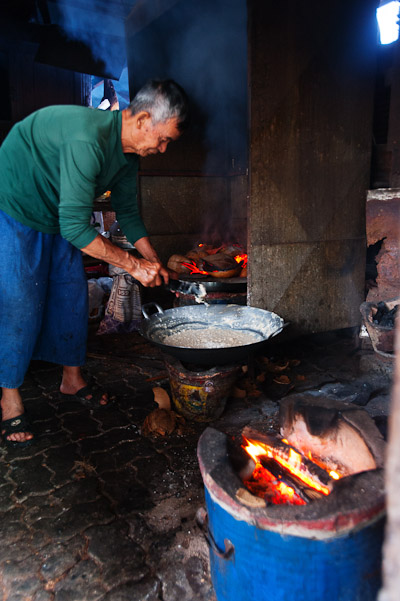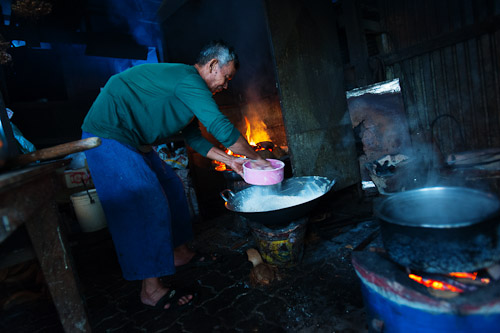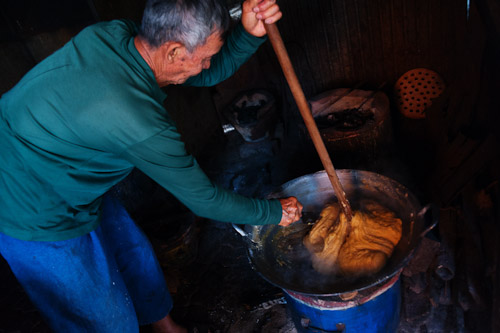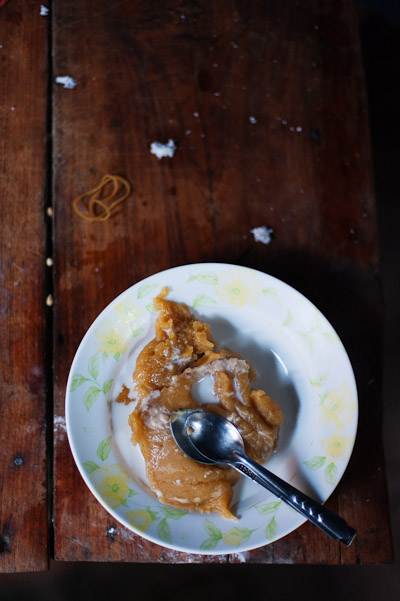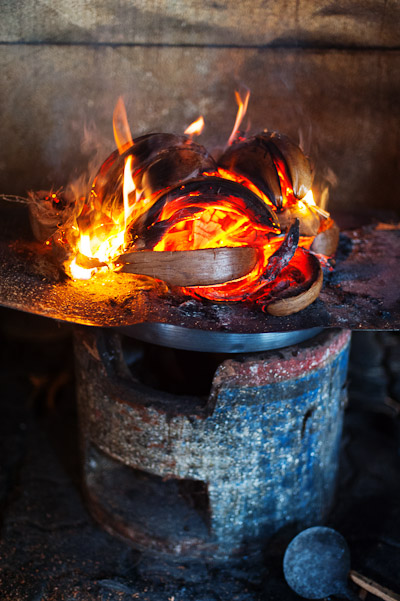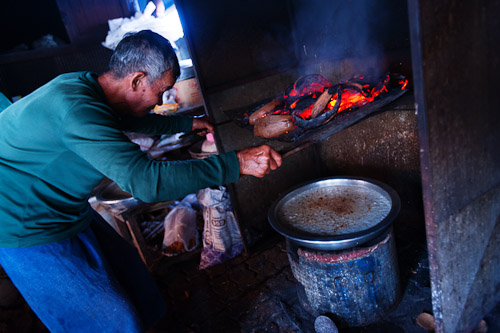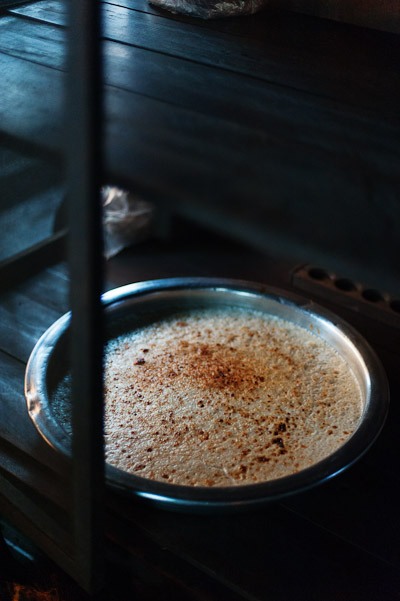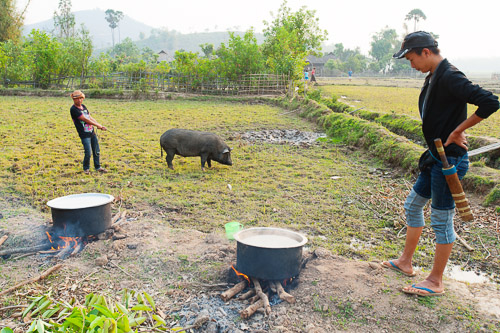 I heard the sibilant shrieks of a pig from the opposite hillside and knew that they could only mean one thing: a festival was under way.
I heard the sibilant shrieks of a pig from the opposite hillside and knew that they could only mean one thing: a festival was under way.
You see, the height of Southeast Asia's dry season is a particularly auspicious time for Tai people. In Myanmar's Shan State, it's a time for Buddhist ordinations and weddings, all of which involve feasts, and thus, animal slaughter.
The doomed pig was heard in Wan Loi, a rather traditional Tai Khoen village just outside Kengtung (also known as Kyaing Tong and Chiang Tung), in eastern Shan State:
The Thai Khoen (also known as Thai Khün) are a Tai ethnic group who speak a dialect closely related to Shan, and more distantly, Thai (in Thai, the village would be known as Baan Doi -- บ้านดอย -- "Mountain Village"). They have their own unique script and are closely associated with the culture and history of Kengtung.
The villagers told us that preparations were being made for the wedding of a 19 year-old boy. A pig was going to be killed, and no, they had no problem with us watching the slaughter. And although what happened next was admittedly graphic, not to mention a first for me, it was also a fascinating insight into a culture (and cuisine) that appears to have changed surprisingly little.
We followed the villagers to a nearby field, where the pig spent its last few moments posing rather defiantly:
After wrestling the immense animal to the ground (not an easy task), the villagers tied the pig's legs together and its mouth shut. Holding the pig down and covering its eyes, a knife was swiftly thrust into its neck, severing its jugular vein:
From this wound spurted a frankly astonishing amount of blood, most of which was directed into a bucket pre-seasoned with herbs and spices. I reckon it took the pig a good five minutes -- and some considerable squealing and struggling -- to die. It was undeniably brutal, but the villagers weren't malicious (nor squeamish) about it, and in fact, the slaughter felt rather anticlimactic.
This was the easy part -- for the villagers, at least. Breaking down the pig would take another four or five hours, and was a job that involved what seemed like all the village's young men.
First, the hair needed to be removed, which was done directly in the field, using hot water, knives and shaving razors:
When the pig was hair-free, it was rinsed in an adjacent stream:
By this point, some of the blood had begun to coagulate, and the villagers ate it, uncooked:
a dish they called boe wan.
Next, the pig was split lengthwise and its innards yanked out:
The intestines and other offal were rinsed in the stream:
Some were chucked directly into hot coals, a cooking process they called jee:
Other bits were cooked over a flame, a process called phao. Some of the blood was boiled, and all of these were eaten with a delicious dip made from dried chili, MSG, salt and makhwaen (prickly ash):
I was fed blood, snout, stomach, intestines, what I suspect was spleen and what I was told was penis. A few of the guys were eating bits of grilled meat seasoned with raw, bitter bile from the stomach of the pig, something I wasn't previously aware that Tai people (or anybody else, for that matter) ate. I was told that those who took part in the slaughter get dibs on the best bits (these appeared to be snout and tail) -- a reward for their hard work. The flame-grilled spleen and the boiled blood were excellent; tender and smoky, not to mention spicy from the dip. The penis had little flavour, but compensated by being the inspiration for several dick jokes (a universal cultural trait, I suspect).
The carcass was divided up:
and brought back to one of the houses:
Home-made rice alcohol had been brought out at this point, and several of the guys stayed on, eating and drinking as it became increasingly dark:
Despite the brutality and messiness of what had happened, and perhaps aided by the rice alcohol and seduced by the setting, I have to admit that I found the whole event quite stirring. In its own unique way, it really was a beautiful, touching occasion, and I was struck the by notion of what I'd just witnessed having probably happened in this very place, in this exact way, for hundreds, or quite possibly even a thousand years. There was an inherent ease and intuitiveness in how the men went about their task, and it felt like the most Tai thing I'd ever witnessed, although we were technically in Myanmar.
Back at the house, those who hadn't helped with the slaughter were busy cutting the meat into even smaller bits:
The pig produced an astonishing amount of meat, much of which was cooked in advance -- fried or boiled -- for the next day's wedding feast.
We stayed until about 10pm -- late by Shan State standards -- chatting, eating and drinking. I bought the guys a case of Leo and some cigarettes, and one of the villagers made us a special version of laap, the northern Thai meat dish, in which the pig's brain was minced along with the usual pork. The fatty brain and the assertive spice mixture came together in an intersection of spicy and rich that was profoundly delicious. But I suspect that time, place, culture and history were the ingredients that made this meal quite possibly one of the most delicious and memorable I've encountered in Southeast Asia.












